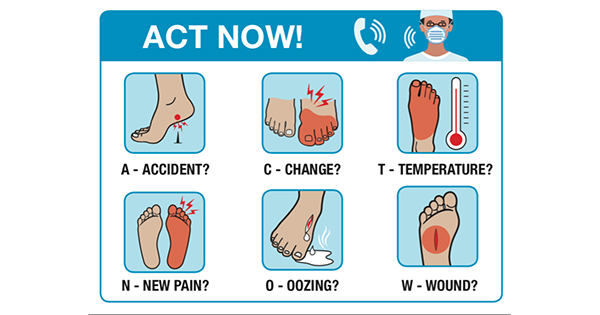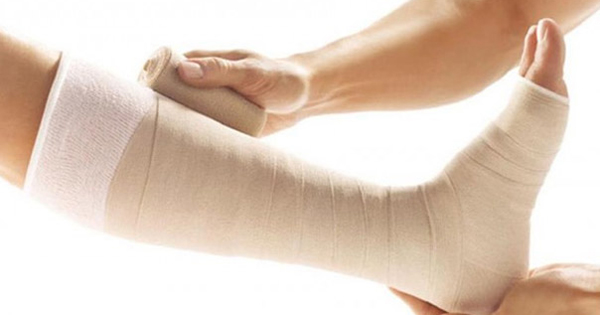When caring for patients who have had chronic lesions for many years, practitioners sometimes stumble across a good outcome using a novel approach. Such situations are then reviewed retrospectively, with the intention of describing the care in order to let others know what wound therapy directions might be worth considering in complex cases. Reporting such as this can be thought of as a quick postcard from the frontline rather than a considered letter from headquarters. It is a flawed method because it can neither produce cause and effect data nor potentially even allow any reasonable suggestion of a possible linkage between treatment and outcome since it may be nothing more than a chance produced outcome. However, intuition based on experience that there was something of value occurring makes a case study worth reporting because it signposts possible areas for future prospective study. The frequency of some diseases can mean that individual practitioners in non-specialist clinic situations may only see a single case.
It is worth acknowledging the primacy of evidenced based care in today’s health service, but the use of new agents in complex wounds can lie outside these boundaries. Innovative care must rely on an understanding of both the wounding condition and the mode of action of the product, together with a clinical risk assessment suggesting at worst the product will be unlikely to cause harm and may be likely to be beneficial. Taking these considerations into account and proceeding with the informed consent of the patient will reduce the potential problems of malpractice litigation associated with innovative care.
Utility of single case studies
A single case study was reported in a recent publication exploring management of necrobiosis lipoidica diabeticorum (NLD; Onugha and Jones, 2003). Relative rarity makes conditions hard to study in an organised fashion. Longstanding complex and chronic wounds may be treated in many ways, often with the latest products in an attempt to get lucky on healing for the patient who may be low on hope of ever finding a resolution. This is not unreasonable providing the practitioner bases their decision to utilise a treatment on the most up-to-date knowledge of the wound’s causative condition, wound healing physiology and the product’s compatibility to the targets for wound care (Stotts and Wipke-Tevis, 1996; Schultz et al, 2003).
This is the basis of a considered and appropriate care plan which attempts to ensure that all measures are taken holistically to get the patient into the best health that is practically achievable to facilitate wound healing prior to initiating novel therapy. The application of new therapy must be in the context of good wound care, i.e. that which is required to reverse underlying aetiology if this is possible, and remove any local wound factors that might delay healing, such as callus build up, hyperkeratosis at the wound edge, excess exudates and so on.
Necrobiosis lipoidica diabeticorum
The following case study considers the application of Promogran (Johnson and Johnson Wound Management Worldwide), a protease modulation therapy, to the chronic lesion of a patient with NLD. The more common term for this condition is necrobiosis lipoidica which allows inclusion of the significant minority of cases that occur in patients who do not have diabetes (Lowitt and Dover, 1991). This condition is associated with diabetes and usually affects women under 40 years with a female to male ratio of 3:1 (Lowitt and Dover, 1991). It is a rare complication that occurs in approximately 0.3% of all patients with diabetes. Lesions have been described as painless (Westerhof et al, 1993) though this is not consistent with the case described here when the lesions were open. However, in the case we describe the condition was complicated by an underlying ischaemia.
Lesions are usually located on the anterior surface of the leg although they can be elsewhere. They are atrophic in appearance, recessed below normal skin level and contain telangiectatic vessels (Westerhof et al, 1993). Ulcerations solely on the leg account for 85% of occurrences (Lowitt and Dover, 1991). These skin conditions are disfiguring and are likely to cause psychological discomfort especially when they appear on areas of commonly exposed skin.
Aetiology of NLD is unknown but microangiopathic and neuropathic processes have been suggested along with collagen abnormality, altered immune mechanisms and leucocyte functionality (Paquette and Golomb, 2001). Severe ulcerations often resist medical (corticosteroids, fibrinolytics, antiplatelet agents) and surgical treatment (deep excision and split thickness skin grafting, skin flap or allografted cultured keratinocytes) and have been known to develop into squamous cell carcinoma (Lowitt and Dover, 1991).
Case study
Caz is an optimistic outwardly fit 47-year-old married women who takes pride in her appearance. She also undertakes a regular role in the daytime care of her grandson, a boisterous toddler of 2 years.
History
Caz has had NLD for over 26 years on the left anterior lower leg/foot and the current ulcer has been present for at least 4 years (see Figure 1 for Caz’s account of living with necrobiosis). Caz was diagnosed with diabetes in 1974 and took oral hypoglycaemics for 3 years. She started on insulin after a diabetes coma. Her most recent HbA1c result from September 2003 was 10.5% (normal range given by local pathology laboratory 4.2–6.1%; DCCT target 7% or less (DCCT Research Group, 1993), indicating suboptimal control. Previous HbA1c results from February 2002 and Oct 2000 were 9.3% and 8.2%, respectively, which demonstrates a long-term tendency to be above the desired range. Renal and liver function tests in February 2002 were normal but total cholesterol at 5.8 mmol/l was higher than the normal range (desired to be < 5 .2 mmol/l). Cholesterol levels also remained higher than desirable with values of 5.1 mmol/l during January 2001 and 5.4 mmol/l on August 2001. Caz is on a statin (simvastatin 40 mg) and her cholesterol level is now 4.8 mmol/l as at July 2003.
NLD lesion
In 1977 a tiny spot appeared on the top of Caz’s left foot. Her GP, skin and diabetes specialists at that time were unable to provide any information on diagnosis or management. Diagnosis of necrobiosis lipoidica was made in 1978 by another diabetes physician, but no treatment was available. A biopsy was taken by a skin specialist in 1980. Subsequently care of the ulcer has been shared by her GP, diabetologist, surgeon and dermatologist, who have used various treatments, including eusol and paraffin, sticking plasters, steroid injections, steroid creams, Debrisan, curettage and nicotinic acid. According to Caz the latter treatment just turned her teeth black. The most valuable assistance came from a 1985 dermatologist referral to the Red Cross who instructed her on the use of make-up to conceal the lesion. However, Caz recalls that with this make-up in place there was ‘no give in the skin causing more ulcers on foot and leg.’ Further recollections demonstrated that the foot lesion had healed but the leg ulcer remained open constantly, at times bigger or smaller.
In June 2000, she was referred by the dermatologist to the podiatrist for care of a foot ulcer. At that time her leg lesion was under regular review by the dermatologist and locum surgeon, the latter of which requested daily salt baths and saw her fortnightly to scrub the ulcer bed, which Caz reported to be extremely painful. In November 2001, Caz was admitted to hospital by her GP with general unwellness and deteriorating ulcerations through which tendons were showing. It was during this time and thereafter that the podiatrist took over the regular aspects of care and review of both the leg and foot ulcers. In June 2000, Caz revealed symptoms of intermittent claudication necessitating referral to vascular surgery and ankle brachial pressure index (ABPI) testing. The result in the ulcerated leg was 0.33 and the result in the right leg was 0.46.
Angioplasty was performed in April 2001, but Caz has so far declined to pursue vascular grafting. Figure 2 shows the leg approximately 7 months post-angioplasty. Inflammation distal to the foot ulcer indicated an active inflammatory process although there were no obvious signs of infection. A black spot on the lateral edge of the leg ulcer is a sign of infection particularly if its appearance is sudden and in the presence of good care. In May 2002, the ABPI in the leg affected by necrobiosis ulceration was 0.46 and there was an ABPI of 0.6 in the other leg, despite the continuing peripheral vascular disease. Caz remains an occasional smoker. Figures 3–6 show the improving and deteriorating nature of NLD prior to application of Promogran.
Lifestyle factors
Overall the condition restricts Caz’s life in a number of ways. Firstly, the ulcer requires regular care by healthcare professionals; every 1–2 days from practice nurses and once a week from the podiatrist. Caz also has to undertake part of the maintenance care herself. The professional care requires her to attend her GP surgery in her home village for nurse wound care and she makes regular visits to the chiropody clinic in the nearest market town 10 miles from home. This wound care schedule restricts her potential employment opportunities and disrupts her social schedule. Secondly, her walking and exercise schedules are limited to reduce the risk of worsening the ulceration and she is advised to rest regularly with the legs elevated. Thirdly, her style of clothing is restricted up to a point because clothing must provide some protection against minor trauma from everyday knocks, such as jeans rather than skirts. Her ability to play with her grandson is also limited in order to prevent unnecessary trauma to the ulcerated area. During the diathesis of the ulcerations, there are times when they deteriorate from the disease process or from infection causing pain and anxiety. To some extent it could be said that the condition rules the patient. This is the case with many chronic wounds and becomes the way of life for the patient.
Wound care approaches
There have been a number of approaches to wound care in the past 3 years, some producing only transient success. These have included alginates (Sorbsan) and hydrogels (Granugel), the latter sometimes in combination with silicone net (Mepitel). Since her hospitalisation in November 2001, Caz has also been taking antibiotics constantly starting with flucloxacillin and metronidazole, then 500mg flucloxacillin four times daily. This was then reduced to 250 mg four times daily as a maintenance dose elevating at times to 500 mg when wound conditions deteriorated.
The standard care provided by the chiropody service since June 2000 has ensured close observation, regular debridement of callus and fibrin deposits that might hinder epithelialisation, provision of wound dressings consistent with moist wound healing, aspects of wound bed preparation, monitoring for early signs of infection and adjustment of antibiotics and also the coordination of care/interventions from other specialists, such as the diabetologist, diabetes nurses, vascular surgeon and tissue viability nurse.
During a joint consultation with a podiatrist and tissue viability nurse specialist in April 2003 it was discussed and agreed with Caz to try Promogran. This is a protease modulating therapy that binds excess matrix metalloproteases, known to be present in chronic wound fluid, and prevents them from deconstructing extracellular matrix in the granulation tissue at the wound base. It also protects growth factors allowing them to contribute to production of granulation tissue (Moore, 2003).
Promogran is suited to application on indolent wounds free of necrotic tissue and excessive slough. It is applied as the primary contact layer and is commonly backed with an antimicrobial dressing such as Actisorb Silver 220, Inadine or Acticoat since clinical experience with the product shared nationally shows that critical colonisations with Pseudomonas aeruginosa and local infections with other pathogens can sometimes occur after start of therapy (Johnson and Johnson Wound Management Promogran Symposia 2003, UK). To date there are no data to suggest this apparent phenomenon has anything to do with the use of Promogran and it may just be chance outcomes in the chronic wound target group that will all no doubt be either colonised or critically colonised with bacteria (Kingsley, 2001). However, given experience and the unlikelihood of harm when using a slow release/safe antiseptic wound formulation of silver or iodine in a chronic inflammatory wound it is not an unreasonable standard application combination.
Promogran was initiated on April 23 2003 and applied in two gently normal saline moistened layers to the open base of the ulcer. The moistening of the Promogran is valuable in activating the dressing when the wound is in a drier phase. This was covered by Inadine to provide an antimicrobial backdrop, absorbent pad and secured using a retention bandage. The care plan was for the practice nurse to change the therapy and retention dressings
every 2–3 days and for the podiatrist change it once weekly to enable regular review of progress. On the basis of data on the effectiveness of Promogran (Wound Care Device Expert Meeting, 2001) it was decided to continue treatment for 6 weeks, stopping at this point or earlier if infection or other obvious deterioration occurred or if no improvement was visible or experienced by Caz in terms of pain control, for example. At 6 weeks if improvement was visible the protocol would be continued for a further period of 6 weeks and reviewed again. In this case, it was felt that the therapy could be continued until epithelialisation was completed as the underlying chronicity factors of the disease process would still be present and could cause an immediate cessation of healing if therapy was discontinued before epithelialisation.
After the first application Caz noticed a number of interesting features in terms of symptom control (Figure 7). After 7 days there were signs of improvement, and a notable amount of granulation and less inflammation surrounding the wound was visible to the podiatrist (Figure 8).
Conclusion
At 19 weeks after initiation of therapy the wound had reduced in size by approximately 75–90% and was well on the road to healing (Figures 9–11). Caz noticed that there was much less local redness and that the shape of her ankle had changed, which suggests a reduction of inflammation. Whether this will lead to a stronger scar that remains closed for longer between ulcerations remains to be seen. Promogran was continued until full epithelialisation which occurred in early January 2004, following an 8.5 month course of therapy. Whilst this is the desired outcome it has to be acknowledged that the natural history of this ulcerative condition is one of unpredictable change and the outcome may only be coincidental to the use of Promogran, especially considering the duration of therapy. If the necrobiosis causes a further lesion or the scarred area is disrupted by trauma it will be part of the care plan to start Promogran as soon as possible and appropriate (i.e. when the wound is free of necrotic burden and excess slough) rather than wait until chronicity is confirmed by healing delay.
One of the challenges for use of protease modulation therapy, as unit cost is a little more expensive than standard moist wound healing products, is when should it be started. The authors suggest that if despite appropriate wound care there is no progression towards healing at 4–6 weeks, treatment should start at this point. In patients with risk factors for chronicity (such as diabetes, rheumatoid arthritis, ischaemic lesions) treatment should be as early as possible and appropriate. In those with a history of delayed wound healing treatment should start as early as possible and appropriate.
What is clear from discussions with Caz is that she had an improved quality of life during the treatment period with Promogran and she is delighted that healing was achieved, giving her hope for effective treatment for future ulcerations from her NLD.
Acknowledgement to ‘Caz’ for her consent to use her experience for this case study and provide her personal account.





